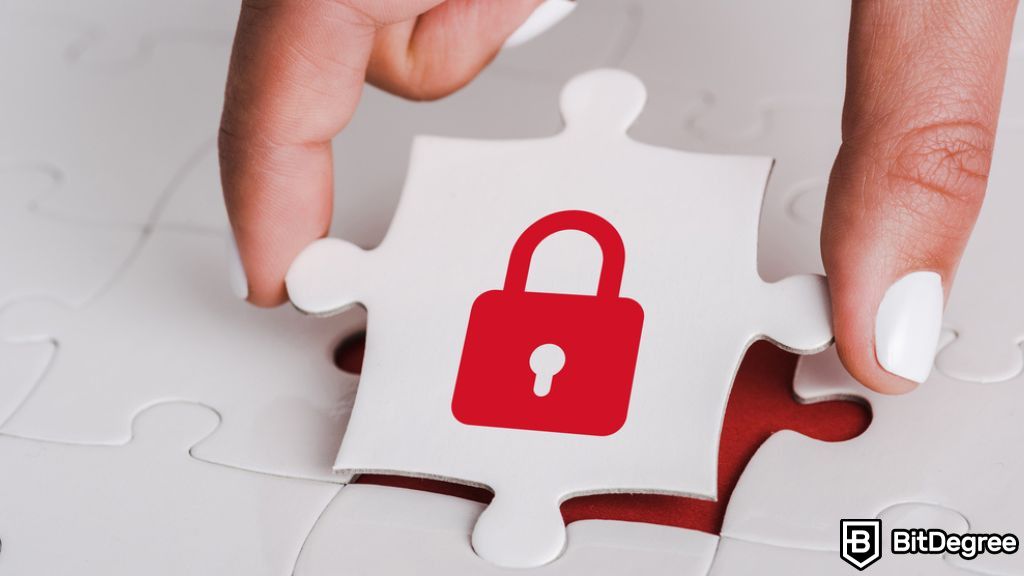Key Takeaways
- Cryptographic methods, consensus algorithms, and distributed ledger systems are blockchain security mechanisms that maintain data integrity, confidentiality, and immutability.
- Blockchain vulnerabilities, such as 51% attacks and phishing scams, pose significant risks to decentralized networks. These include fund loss and reduced trust in the blockchain system.
- Even with robust technology, blockchain security depends on user awareness and caution.
Free Airdrop Season 7 is LIVE! Answer fun questions or do simple tasks to earn rewards from the $30K BitDegree prize pool. Participate Now ! 🔥
Blockchain technology revolutionizes industries by offering decentralized, transparent, and tamper-resistant systems. However, alongside these benefits, you’ll also need to be aware of blockchain security challenges.
From phishing attacks and 51% attacks, the risks can lead to financial loss and data breaches. In addition, security threats can affect crypto wallets, potentially leading to the theft of digital assets.
Even when you use a reputable wallet like Binance Wallet or Ledger, understanding blockchain security challenges is important to further safeguard your assets. Let’s delve into this article to grasp essential insights and best practices to enhance security in the blockchain landscape.

Did you know?
Subscribe - We publish new crypto explainer videos every week!
What is a Crypto Mining Rig? Is it Worth it? (EASILY Explained)


Table of Contents
- 1. What is Blockchain Security?
- 2. Different Types of Blockchain Security
- 3. Security Mechanisms in Blockchain
- 4. Common Blockchain Vulnerabilities
- 4.1. Phishing and Sybil Attacks
- 4.2. Wallet and Smart Contract Vulnerabilities
- 4.3. 51% Attacks
- 5. Best Practices for Blockchain Security
- 5.1. Secure Smart Contracts and Wallet Practices
- 5.2. Identity Verification and Rate Limiting
- 5.3. Regular Risk Assessments and Security Training Sessions
- 6. Conclusions
What is Blockchain Security?
Blockchain security, a crucial aspect of blockchain technology, is a set of measures, protocols, and practices designed to safeguard data within blockchain networks. It involves techniques and approaches to protect against unauthorized access, data tampering, fraud, and other threats.
Latest Deal Active Right Now:Head to BitDegree Missions, gather as many Bits as possible & claim your stake of the $30,000 Prize Pool! Don't waste your time & start collecting Bits by completing Missions and referring friends.
But, how secure is blockchain actually? At its core, blockchain technology produces a data structure with inherent security mechanisms based on cryptography, decentralization and consensus principles – which we’ll discuss in the next section.
Most blockchains or distributed ledger technologies (DLT) store data in blocks, each containing a transaction or bundle of transactions.

Each new block in the blockchain is connected to all the blocks before it in a cryptographic chain, which makes it nearly impossible to modify.
All transactions within the blocks will be validated and agreed upon by a consensus mechanism. This process ensures that each transaction is true and correct, building confidence in the blockchain technology’s security features – no more questions like, “Is blockchain safe?” or “How secure is blockchain?”.
Blockchain’s decentralization distributes control among members across a network. These members work together to validate transactions, ensuring no single point of failure and preventing malicious actors from manipulating transactions.
Different Types of Blockchain Security
Besides the mechanisms, the blockchain security level depends on its network type, which varies in terms of who can join and who has access to the data
Networks are generally classified as public or private, based on who is allowed to participate, and permissioned or permissionless, depending on how participants gain access.
Public blockchains are open to anyone – they can join the network, validate transactions, and read the data on the blockchain. Examples include Bitcoin and Ethereum. “How secure is blockchain when it is public and open to anyone?” This network type is generally secure, thanks to its decentralized consensus mechanism, which makes it difficult for any single entity to control the network.
Private blockchains, like Hyperledger Fabric and Corda, restrict participation to a specific group, usually within a company or consortium. A central authority or a group of entities will control the data and validation process.
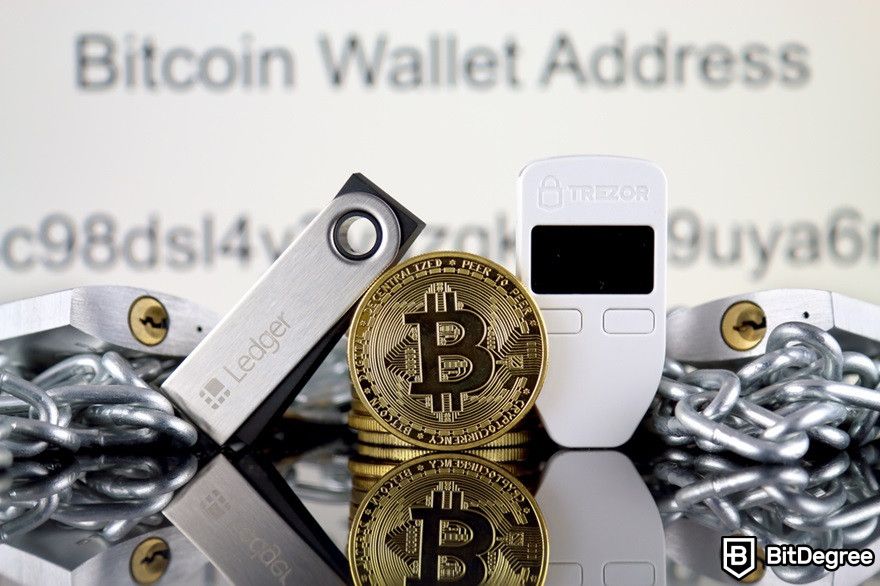
Permissioned blockchains require approval to join and access data, reducing the risk of malicious actors joining. They can be public or private, but entry is controlled.
Permissionless blockchains allow anyone to join and participate without restrictions. Public blockchains are typically permissionless.
As traditional blockchain models – public or private, permissioned or permissionless – present unique security challenges, let me introduce you to the newest version of blockchain technology: hybrid blockchain.
Hybrid blockchains offer a flexible solution that combines the strengths of existing blockchain models. This transition allows organizations to enjoy the benefits of decentralization and transparency while maintaining more control over access and data management.
Security Mechanisms in Blockchain
Blockchain security relies on a range of mechanisms to protect data against malicious attacks. These are the backbone of the technology, forming a robust framework that safeguards decentralized networks.
Key components such as cryptographic methods, consensus algorithms like Proof-of-Work (PoW) and Proof-of-Stake (PoS), and cryptographic principles all play vital roles in answering the common question, “Is blockchain safe?”.
Let’s delve into these mechanisms in detail, starting with PoW and PoS consensus algorithms. These play a central role in blockchain security because they determine who validates transactions and how new blocks get added to the blockchain.
In PoW-based blockchains like Bitcoin, miners compete to solve complex mathematical puzzles to validate transactions and add blocks to the blockchain. This process requires significant computational power, which acts as a barrier to attacks.
Yes, the computational effort and energy of the network’s mining power are effective in making PoW secure against most attacks, but it has raised environmental concerns.
Therefore, PoS was created to replace computational power with economic incentives to reduce carbon footprint.
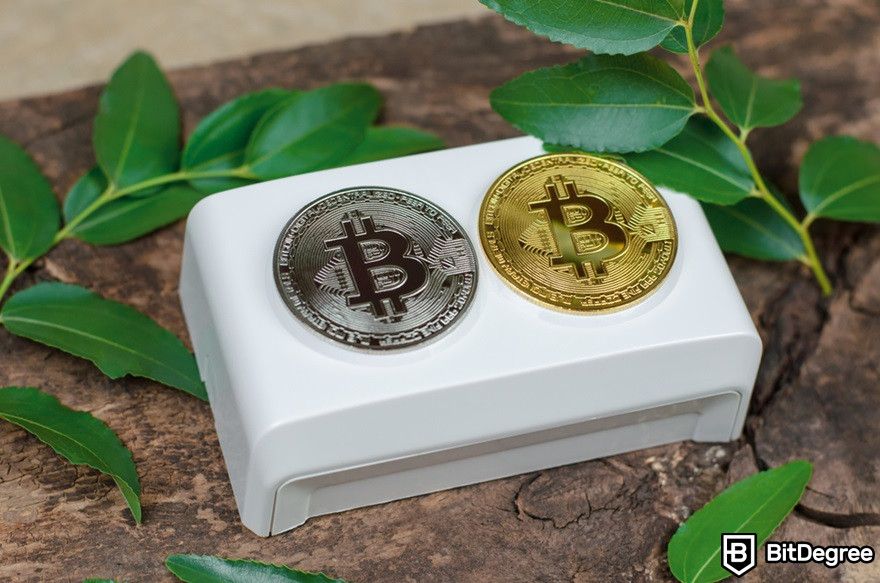
Instead of mining, the network selects validators to create blocks based on how much cryptocurrency they “stake” as collateral. They’ll earn rewards for validating transactions and can be penalized for malicious behavior.
The mechanism ensures that it’s costly for an entity to gain control over 51% of the network’s staked assets, which improves blockchain security.
The second blockchain security mechanism is cryptographic principles.
Many people wonder, “Why is blockchain secure?”. The answer lies in its strong cryptographic principles, which play a key role in protecting data and ensuring the integrity of transactions.
Cryptography involves various techniques for encoding and securing information to keep the blockchain safe from unauthorized access and eliminate the need for a centralized party[1] to act as an intermediary.
The first technique is public-key cryptography, also known as asymmetric cryptography. It uses a pair of keys: public and private.

Public keys can be shared to encrypt data or receive transactions, while private keys are kept secret to sign transactions or decryption. This approach provides secure digital signatures and authentication, ensuring that transactions come from legitimate sources and haven’t been tampered with.
Digital signatures add a layer of accountability, as each signature is unique to the private key holder, making it difficult for malicious actors to fake.
Another technique in cryptography is the use of hash functions. These functions convert input data into a fixed-size output, known as a hash.
Hashing plays a crucial role in maintaining the integrity of blockchain data. With hash functions, even a slight change in the input produces a completely different hash. This capability helps detect tampering, making it easier to identify if data has been altered.
To further strengthen cryptography, blockchain encryption is used to ensure data confidentiality.
Encryption in blockchain involves encoding data so that only authorized parties can access it. This principle is essential for maintaining data confidentiality and privacy. Techniques in this blockchain encryption include:
- Symmetric encryption. It’s where the same key is used for both encryption and decryption.
- Asymmetric encryption. This involves separate keys for encryption and decryption to help protect sensitive information in blockchain applications.
Encryption ensures that even if someone intercepts the data, they can’t understand it without the right key to decrypt it.
There are also zero-knowledge proofs (ZKPs), a blockchain privacy technique that extends the concept of encryption. It ensures that sensitive information remains confidential.
In blockchain, ZKPs allow users to prove the validity of a statement without revealing the underlying data. Privacy-focused blockchains use this approach to keep users anonymous while keeping the network secure and reliable.
Lastly, there's distributed ledger technology in the essential security mechanisms of blockchain.

A ledger is a record-keeping system that logs transactions and other information.
Distributed Ledger Technology operates on a decentralized network where multiple participants, or nodes, maintain and update the ledger collectively. This contrasts with the traditional setups where a central authority maintains the ledger, whether it’s for financial transactions or other types of data.
A key feature of this blockchain security mechanism is that each node in the network holds a copy of the entire ledger.
The node distribution answers your question, “Why is blockchain secure?”. This feature allows all participants to view the same data, increasing the blockchain’s transparency. Additionally, it strengthens security by removing single points of failure, making the system more resilient against attacks.
Another feature of DLT is immutability, which ensures that data cannot be altered or deleted once it's recorded in the ledger.
Common Blockchain Vulnerabilities
If you’re asking, “How secure is blockchain?”, I can say that this technology is inherently safe due to the blockchain security mechanisms: decentralized structure, cryptographic principles, and consensus mechanisms.
Despite its robust design, there are still vulnerabilities that malicious parties can exploit.
Here are some of the most common blockchain vulnerabilities:
Phishing and Sybil Attacks
Phishing attacks are among the most common and effective methods malicious actors use. They’ll trick users into revealing sensitive information, such as private keys or login credentials.
In the context of blockchain and cryptocurrency, phishing attacks can be a significant threat, as they can lead to the loss of digital assets, compromised wallets, and unauthorized transactions.
Most phishing attacks are effective because attackers mimic trusted brands, logos, and messaging styles, developing a sense of familiarity.
These malicious parties also use emotional triggers with urgency to push users to act quickly without verifying the source. Examples are promises of rewards or warnings of account closure to avoid penalties.
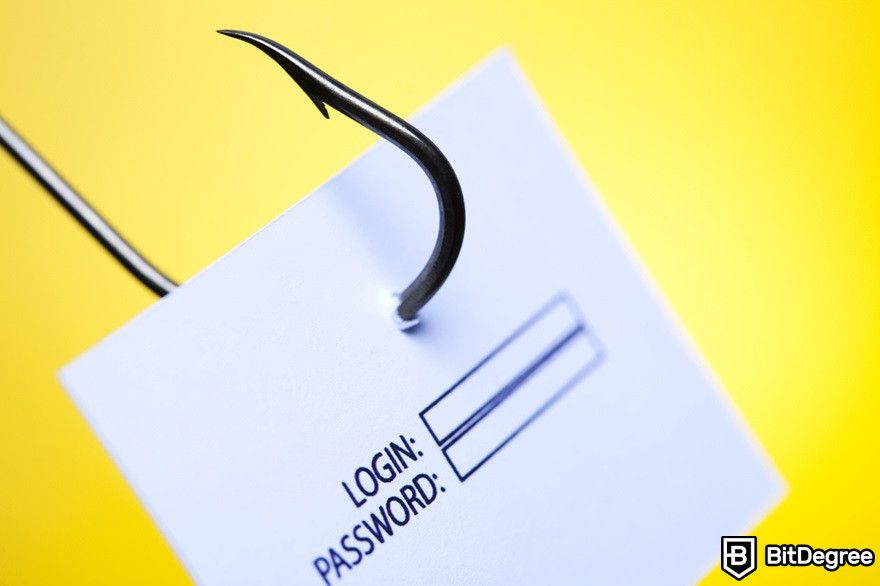
Here are some common types of phishing attacks:
- Email phishing. It involves sending fraudulent emails that appear to come from trusted sources, such as exchanges or wallet providers. These emails often contain links to fake websites designed to collect user credentials or prompt users to download malicious attachments.
- Spear phishing. This phishing focuses on specific individuals or organizations with personalized messages, making the attack seem more credible. In blockchain contexts, spear phishing might target high-profile figures in the blockchain community or employees with access to sensitive information.
- Whaling. It’s a type of spear phishing aimed at high-level executives or individuals with significant influence, such as project leaders, developers or major stakeholders. The goal is to gain access to privileged accounts or critical infrastructure.
- Smishing (SMS phishing) and vishing (voice phishing). These involve using text messages or phone calls to trick users into providing sensitive information. Attackers might pose as customer support representatives, urging users to confirm account details or complete security checks.
- Website phishing. Attackers create fake websites resembling legitimate blockchain platforms designed to capture user credentials or private keys. Attackers often use slight URL variations or design elements to make their sites appear genuine.
Besides phishing attacks, you also need to be aware of Sybil attacks.
Sybil attacks derive their name from the novel “Sybil”, which describes a person with multiple identities. In the context of network security, a Sybil attack involves an attacker creating multiple fake identities to gain an undue advantage or disrupt the functioning of a decentralized network.
The fake identities can be used to:
- Generate fake nodes. The attacker creates many fake nodes – computers or devices that participate in a blockchain network – each with unique identifiers but ultimately controlled by a single entity.
- Gain influence. Once the fake nodes are established, the attacker uses them to gain influence within the network, such as participating in consensus mechanisms, voting on governance decisions, or engaging in resource distribution.
- Disrupt network operations. With enough influence, the attacker can disrupt the normal functioning of the network, such as voting in a way that skews outcomes, blocking legitimate nodes from participating, or even taking control of critical network operations.
- Mask malicious activities. These activities include spamming, launching DoS attacks, or conducting unauthorized transactions.
Sybil attacks can have widespread consequences for decentralized networks, impacting blockchain privacy and security.
For example, with a large number of fake nodes, Sybil attacks can cause network congestion and delays. These issues can then disrupt legitimate nodes’ ability to communicate and collaborate.
The anonymity of fake nodes will also make tracing and identifying malicious activities difficult, resulting in other blockchain security threats like spamming and fraud.
Wallet and Smart Contract Vulnerabilities
Private key security is critical to blockchain and cryptocurrency, as private keys act as digital “passwords” granting access to users’ wallets and assets. If the keys fall into attackers’ hands, users may experience unauthorized access and loss of assets in wallets[2].
One of the most common blockchain vulnerabilities in this category is weak key management. An example is storing private keys on a public cloud service or a shared drive because service providers may have access to your storage, increasing the risk of unauthorized exposure.
Malware and keyloggers can also make the network’s blockchain privacy vulnerable. They’re software tools designed to capture sensitive information, including private keys. Users who unknowingly install such software on their devices risk having their private keys stolen.

On the other hand, wallet vulnerabilities refer to weaknesses in the software, hardware, or operational practices that store and manage private keys.
Software wallet bugs can be problematic because they can result in security flaws, transaction handling errors, and synchronization problems. These blockchain vulnerabilities enable attackers to inject malicious software to obtain sensitive information or manipulate transactions.
Besides bugs, wallets that use insecure communication channels, such as unencrypted connections or unsecured APIs, are also at risk of interception by attackers.
Other risks you may need to be aware of are smart contract vulnerabilities.
Smart contracts are self-executing contracts with terms and conditions directly written into code, enabling automated transactions and processes on blockchain networks.
While they offer efficiency, smart contracts can also contain vulnerabilities that lead to security risks and financial losses.
Common types of smart contract vulnerabilities are:
- Reentrancy attacks. These occur when a smart contract calls an external contract or function that reenters the original contract before its execution is complete which can drain funds from a contract.
- Unchecked external calls. Smart contracts often interact with external contracts or addresses, creating a risk if these interactions are not properly checked. Attackers can manipulate the external contract to perform malicious actions.
- Gas limit and denial-of-service (DoS) attacks. Smart contracts require gas (transaction fees) to execute operations. If a contract has poorly optimized code, it can become vulnerable to DoS attacks that may result in temporary service interruptions to prolonged downtimes.
While smart contracts are a groundbreaking innovation, their vulnerabilities can lead to various blockchain security risks if not carefully managed.
51% Attacks
In decentralized blockchain networks, consensus mechanisms like PoW or PoS ensure agreement on the blockchain's state. These mechanisms are designed to prevent any single entity from having too much control.
However, a 51% attack occurs when an entity gains control of more than 50% of the network’s consensus power, allowing it to influence or disrupt blockchain privacy and security.

The most common impact of a 51% attack is double-spending, where the attacker can reverse transactions, allowing them to spend the same cryptocurrency twice.
An attacker with control over 51% of the network’s power can rewrite or reorganize blocks, leading to invalidated transactions and inconsistencies in the ledger.
They can also prevent legitimate transactions from being added to the blockchain, creating a denial-of-service effect for users and businesses relying on the network.
In extreme cases, an attacker could use their majority control to significantly change the network’s consensus rules, potentially undermining the entire blockchain.
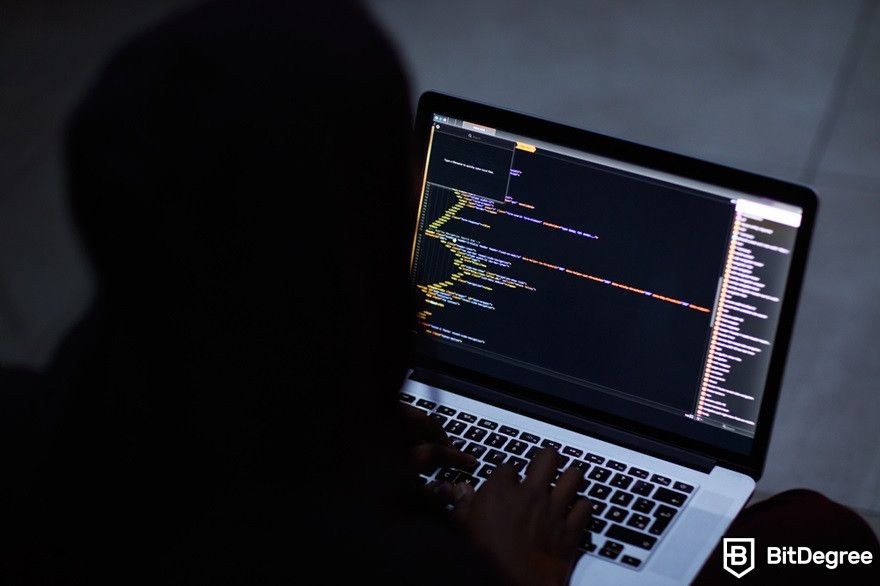
Therefore, developers need to be careful when certain risks appear before a significant disruption occurs, ensuring that they’re ready to take quick action to mitigate any negative impact and improve blockchain security.
A primary factor that increases the risk of a 51% attack is a low overall hashrate or staking power within a blockchain network.
For example, in Proof-of-Work systems, the hashrate represents the collective computational power used to mine blocks and validate transactions. A low hashrate makes it easier for a malicious actor to accumulate enough mining power to exceed 50% of the total.
A lack of robust security measures within a blockchain network can also increase the risk of 51% attacks.
A network with inadequate monitoring systems, weak peer discovery protocols, or ineffective consensus mechanisms enables attackers to exploit vulnerabilities, gain majority control, and manipulate them without detection.
Best Practices for Blockchain Security
The previous sections may have answered your question, “Why is blockchain secure?”. The answer lies in a combination of decentralization, cryptographic techniques, and consensus mechanisms. However, the sections above also show that this technology comes with unique risks that need a set of blockchain security best practices.
These practices are designed to address common blockchain vulnerabilities, protect user assets, and maintain the trustworthiness of the blockchain network.
Let’s delve into these best practices to understand what makes blockchain secure!
Secure Smart Contracts and Wallet Practices
“Is blockchain safe?”. Well, the answer will depend on how you maintain the security of your smart contracts and crypto wallets.
While smart contracts offer efficiency and transparency, they’re not immune to vulnerabilities.
To mitigate these vulnerabilities and improve blockchain security, smart contract developers need to perform thorough testing methodologies, including:
- Unit testing. This process involves testing an individual component or function of a smart contract in isolation to ensure it performs as intended without interference from other parts of the code.
- Integration testing. It examines how different parts of a smart contract interact with each other and with external systems or contracts. This testing is essential because even if individual units work fine alone, they might act differently when integrated with other parts.
Another step is to be cautious when making external calls. This blockchain cybersecurity tip means carefully managing interactions with external systems or contracts to prevent vulnerabilities.

In smart contracts, external calls are operations that involve sending messages, data, or value to other contracts or external addresses.
These calls can be risky because they can create complex dependencies between contracts. If one contract in a chain has a flaw, it can affect other contracts, increasing the risks of vulnerabilities.
Besides making sure the smart contracts are secure, it’s crucial to focus on the security of private keys and proper wallet practices, especially for crypto investors. Private keys of the wallets that fall into the wrong hands can lead to unauthorized access, theft, or loss of assets.
To protect your private keys and wallets, I recommend you use hardware devices like Ledger Nano X. These physical tools store private keys offline, offering high security because they’re disconnected from the internet when not in use.
Using hardware wallets can significantly reduce the risk of online threats like hacking and malware.
You can also implement multi-signature (Multi-Sig). This blockchain cybersecurity practice adds an extra layer of security since users need multiple private keys to authorize a transaction.
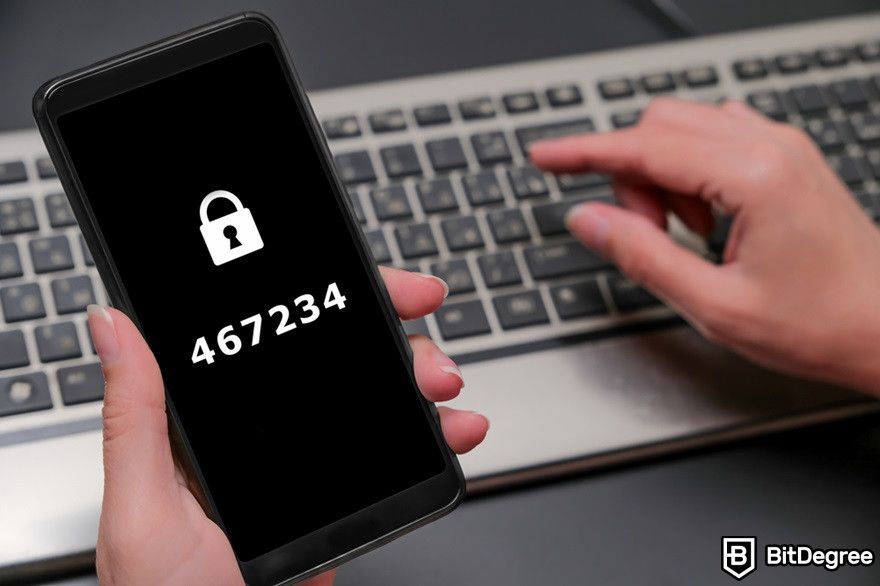
Another critical measure for enhancing wallet security is implementing two-factor authentication (2FA).
2FA means you need to give a second form of identification in addition to your password or private key, making unauthorized access much more difficult. This second factor can be a code sent to your phone, a biometric recognition like a fingerprint or facial recognition, or a physical security key.

Did you know?
Subscribe - We publish new crypto explainer videos every week!
Proof of Work vs Proof of Stake: Which is Better? (ANIMATED)


Identity Verification and Rate Limiting
Identity verification is the process of confirming that a person or entity is who they claim to be. In blockchain and distributed systems, identity verification is critical in maintaining security and preventing attacks that rely on falsifying identities, such as Sybil attacks or phishing.
Unlike traditional systems where a central authority confirms identity, blockchain uses various decentralized methods to authenticate users while maintaining privacy and security.
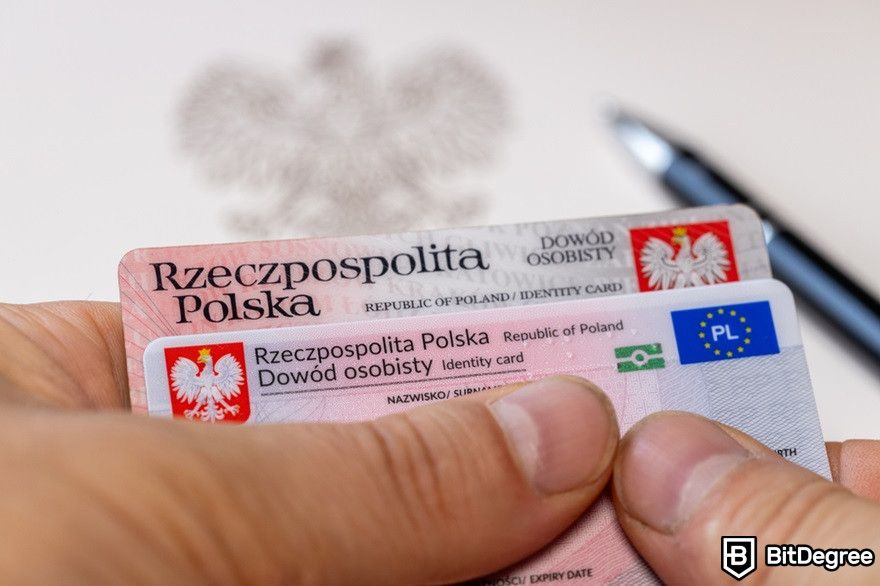
Identity verification in blockchain can use unique identifiers, such as digital certificates and blockchain-based identity tokens, or Proof of Authority (PoA), where specific trusted parties are authorized to validate and confirm user identities.
On the other hand, rate limiting in blockchain means restricting the number of operations that can be performed within a specified period.
This blockchain cybersecurity practice helps mitigate security risks like DoS attacks, which occur when malicious actors bombard the network with a high volume of requests or transactions.

- Secure and reliable
- Accepts fiat currencies
- Lots of trading options
- Reputable exchange
- Accepts fiat currencies
- Offers various trading options

- Fiat currencies - accepted
- Simple to use
- Accepts only the most trustworthy cryptocurrencies
- A leading cryptocurrency exchange platform
- Best for beginner investors
- Accepts fiat currencies

- Fully reserved and transparent
- Multiple tradable asset classes
- Over 300 supported cryptos
- Over 300 cryptocurrencies
- Secure & transparent
- Fully reserved
Regular Risk Assessments and Security Training Sessions
Why is blockchain secure? Risk assessments and audits play a critical role in answering that question. They help identify vulnerabilities, assess compliance with security standards, and ensure the network’s resilience against threats.
Here are some kinds of risk assessments and audits used to enhance blockchain security:
- Network security assessments. These assessments examine the overall security of the blockchain network, from node configurations and network protocols to peer-to-peer communication and consensus mechanisms.
- Operational risk assessments. These blockchain cybersecurity tests include reviewing governance models, access controls, and user authentication mechanisms to help identify risks related to human error and insider threats.
- Compliance audits. These audits ensure the blockchain network complies with relevant laws and regulations, such as anti-money laundering (AML) and know-your-customer (KYC) rules.
- Penetration testing. It involves simulating attacks on a blockchain system to identify vulnerabilities and test security defenses. This test often looks closely at blockchain encryption to find where hackers could break in.
Besides conducting regular audits, strengthening user education and awareness is also key to addressing the question, “Is blockchain safe?”. Well, even the most secure systems with advanced blockchain encryption are vulnerable if users don’t understand best practices, common threats, and their role in maintaining security.
Therefore, organizations should offer regular blockchain security training sessions, workshops, and resources to inform users about the latest threats and security practices.
Blockchain developers need to educate users about device security. Some points they should talk about are:
- Keep their devices updated
- Use antivirus software
- Set strong passwords
- Avoid installing untrusted applications
Another blockchain cybersecurity topic the developers should discuss is safe online behavior. In this topic, they should help users recognize phishing emails and avoid sharing sensitive information on social media.
Conclusions
Blockchain security is the foundation of trust and reliability in decentralized systems. It relies on various mechanisms to maintain data integrity and ensure system resilience, including cryptographic methods, consensus algorithms like Proof-of-Work and Proof-of-Stake, and distributed ledger technology that ensures immutability.
Despite its inherent strengths in cryptography and consensus algorithms, blockchain remains susceptible to various threats, from smart contract vulnerabilities to phishing attacks. Therefore, implementing best practices is important, such as regular audits, secure key management, and ongoing user education.
This is equally crucial for crypto wallets, where sensitive information and digital assets are stored. Choosing secure wallets like Binance Wallet, along with following these best practices, can significantly reduce risks and ensure the integrity of blockchain networks.
The content published on this website is not aimed to give any kind of financial, investment, trading, or any other form of advice. BitDegree.org does not endorse or suggest you to buy, sell or hold any kind of cryptocurrency. Before making financial investment decisions, do consult your financial advisor.
Scientific References
1. Guo, H., Yu, X.: ‘A survey on blockchain technology and its security’;
2. Mollajafari, S., Bechkoum, K.: ‘Blockchain Technology and Related Security Risks: Towards a Seven-Layer Perspective and Taxonomy’.

